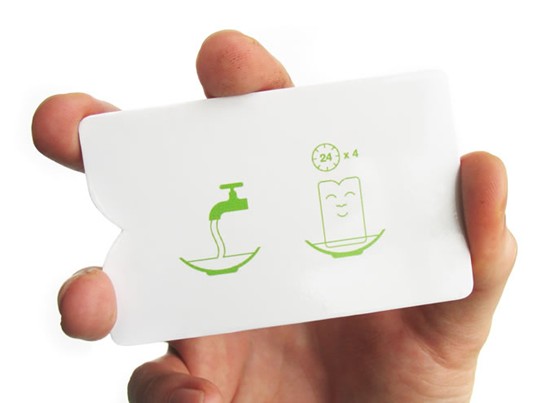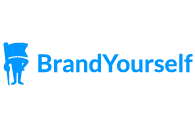
Brand Yourself – 6 Ways to Network with Your Virtual Business Card
Your business card is an important part of your brand, and that of your company. It’s an essential part of the business networking process. A good business card can say a great deal about you above and beyond a URL and contact information. When designed well, a business card can elevate your status with and make you memorable to whomever you pass it on to.
The first recorded use of business cards dates back to the 15th century in China, where it was used as a calling card among business men. After its migration to Europe a couple hundred years later, the standard business card was used as a form of paid advertising for trade merchants that often included a map and directions of where the vendor’s product or service cart was located. As printing became more popular in the 1800’s the business card finally reached the United States, quickly becoming a popular form of advertising and networking among businessmen and the general public. For printing Lynchburg contact CRI Digital Impressions.
As the business card gained in popularity, there became two distinct types of uses: visiting cards and business cards. In the 19th century in the United States, visiting cards were used primarily by individuals as a way to establish social obligations. A stack of cards would be housed in the hallway and became a catalogue of visitors as an early form of “While You Were Out” phone messaging that we are familiar with today. Business cards were widespread among men and women and across classes. People were looked upon in poor taste if they visited or attended an event or made a social call without one.
As our lives have become more virtual and network-based, our vision and idea of the business card has continued to evolve. The traditional paper business card still holds true but the rise in popularity of iPhones and mobile devices has changed the way in which we exchange our contact information. Even a Facebook friend request can be seen as a virtual, casual form of business card exchange. Using a virtual office is also a great idea if you’d like more privacy and you can also use one that is fairly local so that it looks normal for your business. We know a business in Scotland that used the main virtual office Glasgow has and it works brilliantly so that’s a great example of what can be done.
Popular iPhone virtual business card applications like Hoccer, Bump, and others have begun to take the place of the traditional business card.
- Hoccer. A free downloadable iPhone application offers the ability to exchange your contact information with a simple throwing gesture. The application must be opened by both parties who must complete a throwing motion to exchange their information.
- Bump. With over 10 million downloads, Bump is one of the most popular iPhone contact exchange applications. Two people open the application and bump their iPhones with their hands. After only a short setup, all your contact information is easily transferred.
- LinkedIn. With their most recent iPhone upgrade, LinkedIn now offers a contact information transfer service. Both parties must have their bluetooth activated on their iPhone in order to exchange their contact information. While in London, I was able to quickly exchange contact information by just sitting next to someone during a conference or dinner.
For non-iPhone users there are also alternatives to exchanging virtual contact information as well.
- Business Card Readers. Blackberry and iPhone users can use a data capture application that takes a picture or scans the business card right from your mobile device. Another great application for this and other data capture purposes is Ever Note.
- SnapDat. Create an exchange a virtual business card online with anyone. In a matter of minutes, you can create a very professional business card to exchange on social media networks and other online communities.
- Pokens. Pokens are social business card (and isn’t everything social these days?). After selecting a poken and setting it up, you are able to quickly exchange contact information with other poken users and are able to upload the contact information by inserting the USB from the poken into your computer. These are great for large events and conferences where you can connect with a large number of people very quickly. No iPhone, Blackberry, or Droid required. If you’re planning a live webcasting, virtual event companies can provide the gear and studio for you.
So, what’s your experience with these technologies? Do you use them or know others who do? Is the paper business card dead, or are these new toys more novelty than game-changer?
Photo Credit Create It Displays and You Renew.
FTC Disclosure: All products and applications listed and reviewed in this blog post were purchased and paid by Xceptional HR. I did not receive them as a gift with the exception of the Poken.
Jessica Miller-Merrell, SPHR is an author, new mother, and human resources professional with a passion for recruiting and all things social media. She has over 10 years of experience in human resources & recruiting.
Her company, Xceptional HR provides businesses with social media, recruitment, and human resources strategy and consulting. Jessica’s book, Tweet This! Twitter for Business was released January 2010. Follow Jessica on Twitter, LinkedIn, & FaceBook.

I’m a little embarrassed to admit that I didn’t even know there was such a thing as a virtual business card until earlier today. I’m curious now and have been googling for more info for much of the day lol. This is so fascinating to me.
Hi there!I like your post.Where did you got all of the facts from? Excellent content articles and wonderful site… free credit report
Wonderful topic to discussion, Thank’s for sharing.
Is good always know more about of business cards.